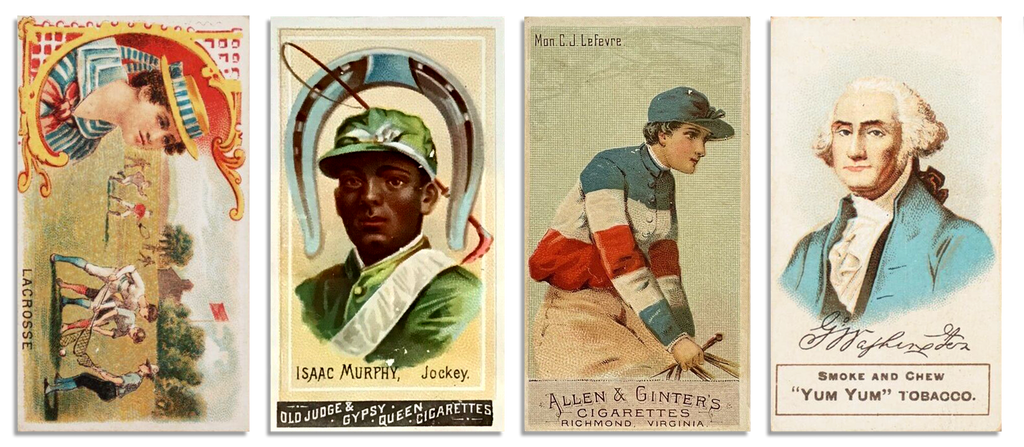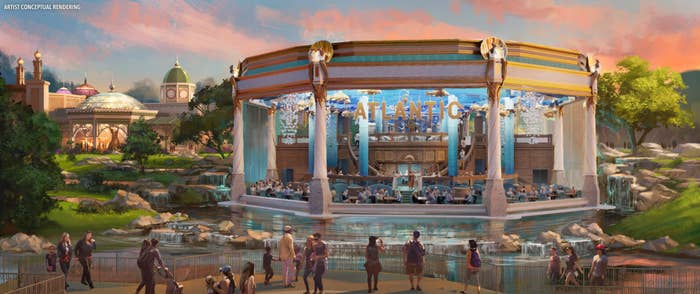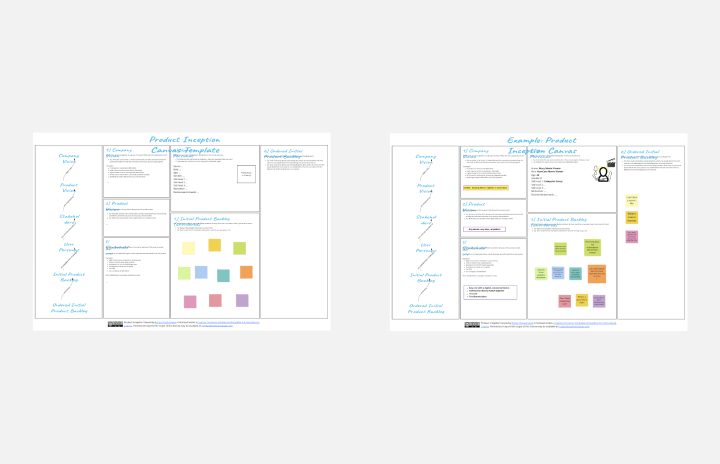Transforming Collectible Experiences: Visual Storytelling from Blind Boxes to Theme Parks
The Evolution of Collectibles: From Mystery to Immersion
I've watched collectibles transform from simple objects into immersive experiences that captivate audiences across multiple touchpoints. In this guide, I'll take you through the fascinating journey of how collectibles have evolved and how you can leverage visual storytelling to create compelling collectible experiences.
The Evolution of Collectibles: From Mystery to Immersion
I've been fascinated by how collectibles have transformed over the decades. What started as simple trading cards and action figures has evolved into complex ecosystems that blend physical products with digital experiences and immersive environments. This evolution represents a fundamental shift in how we think about collectible items and the experiences they create.

The evolution of collectibles has created increasingly immersive experiences
The Blind Box Revolution
Blind boxes fundamentally changed collecting culture by elevating the element of surprise. I believe this format taps into our innate love of discovery and the thrill of the unknown. When we can't see what we're getting until after purchase, it creates a moment of anticipation that traditional collectibles simply can't match.
Companies like Funko, Tokidoki, and BE@RBRICK have mastered this approach, creating impactful product presentations that showcase the packaging rather than the product itself. This reversal of traditional marketing wisdom works because the mystery is part of the product's value.
The Psychology of Unboxing
The "unboxing experience" has become a cultural phenomenon that extends far beyond the product itself. I've observed how companies now design packaging specifically to create shareable moments, with layers of discovery and visual surprises that unfold during the unboxing process. This creates a narrative arc that begins before the customer even sees the actual collectible.
The Collectible Experience Evolution
Below is a visualization of how collectible experiences have evolved over time:
flowchart TD
A[Traditional Collectibles] -->|Addition of Mystery| B[Blind Box Era]
B -->|Digital Extensions| C[Connected Collectibles]
C -->|Environmental Design| D[Immersive Experiences]
D -->|Virtual Worlds| E[Metaverse Collectibles]
style A fill:#FFE0B2,stroke:#FF8000
style B fill:#FFCC80,stroke:#FF8000
style C fill:#FFB74D,stroke:#FF8000
style D fill:#FFA726,stroke:#FF8000
style E fill:#FF9800,stroke:#FF8000
Collectible Ecosystems
Modern collectibles rarely exist in isolation. Instead, they're designed as entry points into larger narrative universes. When I look at successful collectible brands like Pokémon or Star Wars, I see how each physical item connects to games, shows, movies, and experiences, creating multiple touchpoints that deepen engagement.
These ecosystems transform collecting from a hobby into a lifestyle, with each new acquisition adding another piece to a larger story. This approach to visual personal brand story creation has become essential for companies looking to build long-term collector loyalty.
The Anatomy of Modern Collectible Experiences
I've studied the visual language that makes certain collectible brands more successful than others. There's a science to creating items that people feel compelled to collect, and it starts with intentional visual design choices that trigger emotional responses.

Key visual elements that make collectibles emotionally compelling
Character Design & Visual Identity
The most collectible characters often share specific visual traits: simplified forms with distinctive silhouettes, memorable color schemes, and facial features that trigger our innate caregiving instincts. I've noticed how companies like Disney and Sanrio have mastered the art of creating characters that are instantly recognizable even when heavily stylized.
This approach to creating visually appealing presentations of characters extends beyond the product itself to all marketing materials, creating a cohesive visual language that reinforces brand recognition.
Elements of Successful Collectible Design
What makes certain collectibles more appealing than others? This chart breaks down the key elements:
Storytelling Through Objects
What transforms a simple object into a treasured collectible is often the story it represents. I've found that the most successful collectible lines embed narrative elements directly into their design, allowing the physical object to serve as a tangible connection to a larger story world.
This storytelling approach creates emotional resonance that far exceeds the object's material value. When collectors look at an item, they don't just see the physical product—they see characters, moments, and worlds they've connected with emotionally.
Physical and Digital Cohesion
The most innovative collectible brands today create seamless connections between physical products and their digital extensions. I've observed how companies like LEGO have mastered this approach, with sets that connect to apps, games, and online communities, creating a unified experience across touchpoints.
This cohesion requires thoughtful creative presentation topics that maintain visual consistency while adapting to the strengths of each medium. The physical product might emphasize tactile qualities while the digital extension focuses on animation and interactivity, but both should feel like parts of the same cohesive experience.
Theme Parks as Ultimate Collectible Extensions
Theme parks represent perhaps the ultimate evolution of the collectible experience—environments where fans can literally step into the worlds they've collected and experienced through other media. I've been fascinated by how companies like Disney and Universal have perfected the art of transforming 2D intellectual properties into immersive 3D environments.

Theme park environments turn collectible worlds into walkable experiences
From 2D to Immersive 3D
The transformation from flat media to physical environment requires a deep understanding of visual storytelling. I've studied how successful theme parks maintain the essence of animated or illustrated properties while adapting them to physical space constraints and human scale.
This transformation process involves creating visual presentations for older adults and younger visitors alike, ensuring the experience resonates across generations who may have different relationships with the original IP.
The Collectible Experience Journey
This diagram illustrates the customer journey from first contact with a collectible to immersive theme park experience:
flowchart TD
A[First Contact with IP] --> B[Initial Purchase]
B --> C[Collection Building]
C --> D[Community Engagement]
D --> E[Theme Park Visit]
E --> F[Exclusive Merchandise]
F --> G[Enhanced Collection Value]
G --> C
subgraph "Pre-Visit Phase"
A
B
C
D
end
subgraph "Experience Phase"
E
F
end
subgraph "Post-Visit Phase"
G
end
style A fill:#FFE0B2,stroke:#FF8000
style B fill:#FFCC80,stroke:#FF8000
style C fill:#FFB74D,stroke:#FF8000
style D fill:#FFA726,stroke:#FF8000
style E fill:#FF9800,stroke:#FF8000
style F fill:#FB8C00,stroke:#FF8000
style G fill:#F57C00,stroke:#FF8000
The Architecture of Collectible Memories
Theme park designers have mastered the art of creating spaces that themselves feel collectible. I've noticed how the most successful parks design photo opportunities, unique architectural elements, and memorable vistas that visitors want to "collect" through experiences and photographs.
These environments are carefully crafted to create emotional peaks and valleys throughout the visitor journey, with iconic visual moments that become mental souvenirs—collectibles of experience rather than physical objects.
When Merchandise Becomes the Attraction
The most innovative theme parks have blurred the line between merchandise and attractions. I've been particularly impressed by experiences like Star Wars: Galaxy's Edge, where purchasing a lightsaber or droid isn't just shopping—it's a theatrical experience that becomes one of the highlights of the visit.
This transformation of retail into experience represents a sophisticated understanding of how collectibles can bridge the gap between commerce and entertainment, creating memorable moments that enhance the value of the physical product through the story of its acquisition.
Visitor Engagement by Experience Type
How different theme park experiences drive visitor engagement and merchandise purchases:
Creating Visual Narratives Across Collectible Touchpoints
Successful collectible experiences maintain visual consistency across multiple formats and touchpoints. I've found that this consistency is what transforms individual products into a cohesive collectible universe that fans want to engage with across multiple platforms.

Maintaining visual consistency across different collectible formats
Visual Consistency Strategies
Creating visual consistency doesn't mean making everything identical—it means establishing a clear visual language with enough flexibility to adapt to different formats while remaining recognizable. I've observed how successful brands create style guides that define core visual elements while allowing for format-specific adaptations.
This approach ensures that whether a character appears on a trading card, as a blind box figure, in a video game, or as a theme park mascot, it maintains its essential identity while leveraging the unique strengths of each medium.
The Packaging Experience
Packaging design has become increasingly important in the collectible experience. I've studied how companies like Apple have influenced collectible packaging, creating unboxing experiences that feel premium and ritualistic, enhancing the perceived value of the item inside.
The most effective collectible packaging tells a story through its design, materials, and reveal sequence. It creates anticipation and extends the moment of acquisition, transforming a simple purchase into a memorable experience.
Digital Extensions of Physical Collectibles
How digital assets enhance physical collectible experiences:
flowchart LR
A[Physical Collectible] --> B[AR Experience]
A --> C[Digital Companion App]
A --> D[Online Community]
A --> E[Exclusive Digital Content]
B --> F[Enhanced Value]
C --> F
D --> F
E --> F
style A fill:#FF8000,stroke:#E65100
style B fill:#42A5F5,stroke:#1565C0
style C fill:#42A5F5,stroke:#1565C0
style D fill:#42A5F5,stroke:#1565C0
style E fill:#42A5F5,stroke:#1565C0
style F fill:#66BB6A,stroke:#2E7D32
Digital Enhancements
The most innovative collectible experiences today bridge physical and digital worlds. I've been particularly impressed by how augmented reality has transformed static collectibles into interactive experiences, adding layers of value that weren't possible with purely physical products.
These digital extensions—whether AR features, companion apps, or exclusive content—create additional touchpoints that keep collectors engaged with their items long after the initial purchase, extending the product lifecycle and building deeper brand connections.
Building Anticipation Through Visual Teasers
The art of the reveal has become a crucial part of the collectible experience. I've studied how companies create anticipation through strategic visual teasers, limited-edition aesthetics, and release calendars that keep collectors engaged and excited about upcoming additions to their collections.
This approach transforms collecting from isolated purchases into an ongoing narrative that collectors follow over time, with each new release representing a new chapter in their relationship with the brand.
The Business of Visual Collectible Experiences
Creating successful collectible experiences isn't just an art—it's also a science with clear business implications. I've analyzed how the most profitable collectible ecosystems balance creative vision with strategic business planning to create sustainable growth over time.

Revenue streams in a diversified collectible ecosystem
The Economics of Collectible Ecosystems
Collectible ecosystems generate revenue differently than standalone products. I've observed how successful companies create multiple revenue streams across different price points and formats, allowing collectors to engage at their preferred investment level while encouraging deeper engagement over time.
This ecosystem approach also creates valuable network effects, where each new touchpoint increases the value of existing collectibles and drives engagement across the entire product line.
Revenue Distribution in Collectible Ecosystems
How revenue is typically distributed across different components of a collectible ecosystem:
Designing Collectible Roadmaps
Successful collectible lines are planned strategically over time, not released ad hoc. I've studied how companies create multi-year roadmaps that balance predictability with surprise, giving collectors enough information to stay engaged while maintaining the excitement of the unexpected.
These roadmaps typically include core releases, special editions, seasonal themes, and collaborative crossovers, creating a rhythm of releases that keeps the collectible line fresh while building on established visual foundations.
Measuring Engagement Across Touchpoints
Understanding how collectors engage with different touchpoints is crucial for optimizing the collectible experience. I've analyzed how companies track engagement metrics across physical products, digital extensions, social media, and experiential components to identify opportunities for enhancement.
This data-driven approach allows companies to allocate resources effectively, focusing on the touchpoints that drive the most engagement and value for their specific collector community.
Scaling Without Dilution
One of the greatest challenges in collectible businesses is scaling production without diluting quality or perceived value. I've observed how successful companies maintain quality control as they grow, often by limiting production runs, creating tiered rarity systems, or focusing on quality over quantity.
This approach preserves the collectible appeal even as the brand reaches more customers, ensuring that growth enhances rather than diminishes the value proposition for collectors.
Future Trends: The Next Evolution of Visual Collectible Experiences
The collectible landscape continues to evolve rapidly, with emerging technologies creating new possibilities for visual expression and engagement. I've been tracking several trends that I believe will shape the future of collectible experiences.

The future of phygital collectibles blends physical objects with digital interactions
The Rise of Phygital Collectibles
The boundary between physical and digital collectibles is increasingly blurring, creating what's often called "phygital" experiences. I've been fascinated by products that exist simultaneously as tangible objects and digital assets, with each aspect enhancing the other through technologies like NFC chips, QR codes, and augmented reality.
These phygital collectibles create new possibilities for authentication, personalization, and ongoing engagement that weren't possible with purely physical items, while maintaining the tactile satisfaction that digital-only collectibles often lack.
The Future Collectible Landscape
How different collectible formats will evolve and integrate in the coming years:
flowchart TD
A[Current Collectible Market] --> B[Phygital Collectibles]
A --> C[AI-Enhanced Personalization]
A --> D[Sustainable Collectible Design]
A --> E[Virtual World Collectibles]
B --> F[Future Integrated Ecosystem]
C --> F
D --> F
E --> F
style A fill:#FFE0B2,stroke:#FF8000
style B fill:#BBDEFB,stroke:#1976D2
style C fill:#C8E6C9,stroke:#388E3C
style D fill:#FFF9C4,stroke:#FBC02D
style E fill:#F8BBD0,stroke:#C2185B
style F fill:#FF8000,stroke:#E65100
AI-Powered Personalization
Artificial intelligence is transforming collectible experiences through unprecedented levels of personalization. I've been tracking how companies are using AI to create collectibles that adapt to individual preferences, learn from user interactions, or even generate unique variants based on collector behavior.
This technology enables mass customization at scale, allowing companies to create collectibles that feel personally meaningful to each collector while maintaining the brand's visual identity and quality standards.
Sustainability in Collectible Design
As environmental concerns become increasingly important to consumers, collectible companies are rethinking their approach to materials, packaging, and product lifecycles. I've observed innovative approaches to sustainable collectible design, from biodegradable materials to circular business models that encourage recycling or upcycling of older collectibles.
These sustainability initiatives are not just ethical choices but also business opportunities, appealing to environmentally conscious collectors who want to enjoy their hobby without environmental guilt.
Virtual Worlds as Collectible Frontiers
Virtual worlds and metaverse platforms are creating entirely new possibilities for collectible experiences. I've been exploring how these digital environments allow collectors to display, interact with, and even co-create collectibles in ways that physical space doesn't permit.
These virtual worlds also enable social collecting experiences that transcend geographic limitations, allowing collectors to share their passion with like-minded enthusiasts around the globe in immersive, interactive environments.
Projected Growth of Collectible Segments
How different collectible categories are expected to grow over the next five years:
Transform Your Visual Expressions with PageOn.ai
Ready to create stunning visual representations of your collectible concepts? PageOn.ai provides the tools you need to design, visualize, and present your ideas with professional quality and clarity.
Start Creating with PageOn.ai TodayConclusion: The Future of Collectible Experiences
As we've explored throughout this guide, collectible experiences have evolved dramatically from simple blind boxes to immersive theme parks and beyond. I believe the most successful collectible brands of the future will be those that create cohesive visual narratives across multiple touchpoints, blending physical and digital experiences in ways that feel authentic and meaningful.
The key to success lies in thoughtful visual design that maintains consistency while adapting to different formats, strategic business planning that balances exclusivity with accessibility, and a genuine understanding of the emotional connections that drive collecting behavior.
Whether you're designing a new collectible line, enhancing an existing one, or creating immersive environments that bring collectible worlds to life, the principles we've discussed can help you create experiences that resonate with collectors and build lasting brand value.
I encourage you to use tools like PageOn.ai to visualize your collectible concepts before production, creating clear visual roadmaps that can guide development and help stakeholders understand your vision. With the right visual tools and strategic approach, you can create collectible experiences that transform simple products into beloved worlds that collectors are eager to explore.
You Might Also Like
Transforming Marketing Teams: From AI Hesitation to Strategic Implementation Success
Discover proven strategies to overcome the four critical barriers blocking marketing AI adoption. Transform your team from hesitant observers to strategic AI implementers with actionable roadmaps and success metrics.
How 85% of Marketers Transform Content Strategy with AI Visual Tools | PageOn.ai
Discover how 85% of marketers are revolutionizing content strategy with AI tools, saving 3 hours per piece while improving quality and output by 82%.
Visualizing Electronics Fundamentals: ROHM's Component Guide for Beginners to Experts
Explore ROHM's electronics basics through visual guides covering essential components, power semiconductors, sensors, automotive applications, and design resources for all skill levels.
Strategic AI Marketing Investment Roadmap: Maximizing ROI from the $360 Billion Surge | 2025 Marketing Tech Budget Guide
Navigate the $360 billion AI investment surge with strategic marketing technology budget allocation. Discover proven frameworks for maximizing ROI from AI marketing tools in 2025.
